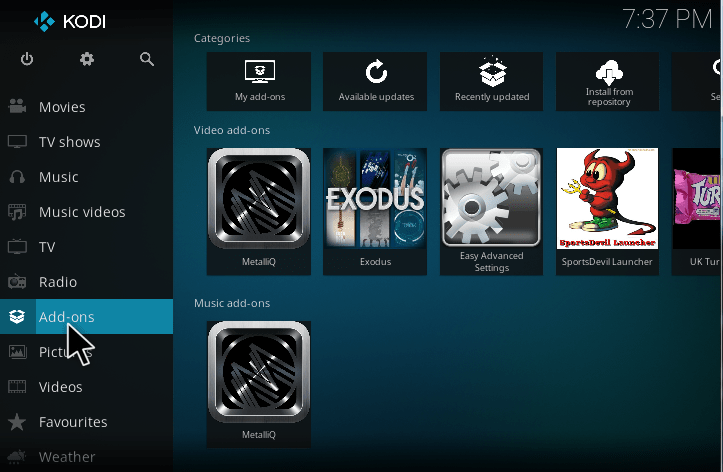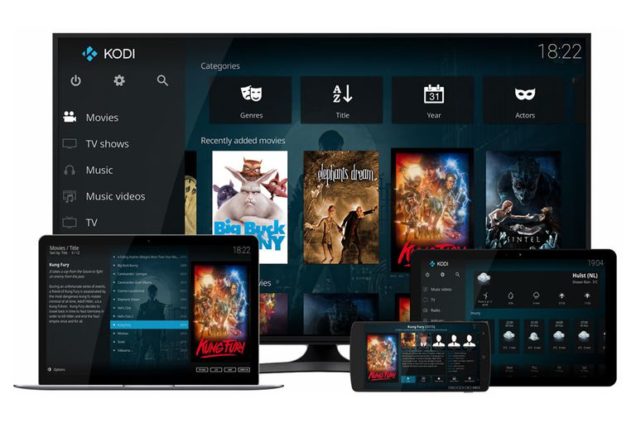

- #Kodi and delicious library install
- #Kodi and delicious library software
- #Kodi and delicious library tv
And even then, if you have multiple devices running Kodi, it won’t sync your library unless you do even more work. If you want to start streaming to other platforms, it gets even more complicated. However, if your files are stored on another computer - say, your home server, or the desktop in your office - you’ll need to go through the more complex process of sharing those files with Kodi over the network. If you’re installing Kodi on the same desktop that your files are stored on, the setup is easy.
#Kodi and delicious library install
When you install Kodi, you’ll be prompted to add files or folders to your library. Kodi’s initial setup can be simple or complex, depending on what you’re doing. It’s the unsung hero feature that lets you play anything on any device and it’s easily the biggest advantage Plex has over Kodi. That means it will automatically convert your videos to whatever type of file it needs on the fly to play anywhere. You can also log in to the web interface for Plex from any device with a web browser, which means you already have access to your content virtually everywhere. Just log in to Plex on your phone and everything that’s available on your server is ready to go. This means if you have movies on your desktop that you want to watch on your phone, you only have to set up one device. It will use that account to sync your library and stream between various devices. With Plex, you’re prompted to create an account and set your “server” up right off the bat. Kodi can stream content from other devices, but you can only stream between computers on the same home network, it’s a little more complicated to set up, and it can’t do transcoding (which means you can run into compatibility problems with certain files). Kodi, on the other hand, deals mostly with files on the computer it’s running on.

Plex is very useful for streaming your media virtually anywhere, but that feature requires the computer that holds your videos to be turned on and connected to the internet all the time (unless you pay for Plex Pass, which we’ll talk more about later). Which one works best for you will depend on the type of hardware you plan to use. Kodi and Plex handle this step very differently. Setting up your home library for the first time is always the most gruelling part of the process. Keep in mind what you prefer while we break down the key differences between them. Even here at Lifehacker, some of us swear by Kodi, while others can’t live without Plex. Everyone enjoys their stuff in slightly different ways, so we can’t say what’s perfect for everyone. It allows you to sync and stream all of your media to any device no matter where you are.Īny time we talk about managing your personal media, there’s going to be an element of personal preference involved.

#Kodi and delicious library software
This project aims to make home theatre software dead simple for everyone. Plex began life as a fork of XBMC, but it’s become so distinct you’d hardly notice. With years of development behind it, there are a ton of add-ons and skins that can add new functionality beyond what’s already included. Here are the basics of each: Kodiįormerly called Xbox Media Center (or XBMC for short), Kodi is an open source project dedicated to building powerful, customisable home theatre software. Despite having very similar goals, however, they have very different ways of getting there.
#Kodi and delicious library tv
Plex and Kodi ( formerly named XBMC) are home theatre apps that allow you to manage your library of TV shows, movies, music and photos from one place, in a slick interface that’s easy to navigate with your remote or even your phone. But which software should you use? Here’s how the two biggest solutions stack up against each other. Who needs Netflix? With home theatre apps like Plex and Kodi, you can roll your own sweet-looking library with all the TV shows and movies you like, with none of the junk.


 0 kommentar(er)
0 kommentar(er)
